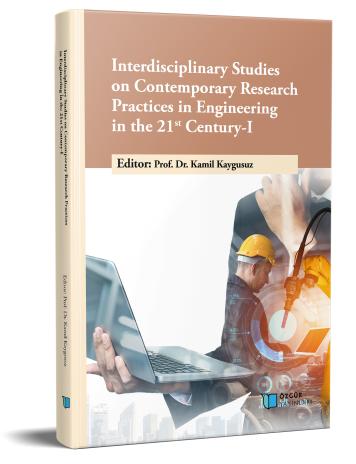
Yağ/Su Ayırma Uygulamalari İçin Dokunmamış Kumaşların Tasarımı ve Üretimi
Şu kitabın bölümü:
Kaygusuz,
K.
(ed.)
2023.
21. Yüzyılda Mühendislikte Çağdaş Araştırma Uygulamaları Üzerine Disiplinler Arası Çalışmalar- I.
Özet
Petrol sızıntılarının ve petrol içeren atık suların deniz yaşamı ekosistemlerine ciddi şekilde zarar verdiği düşünüldüğünde, sürdürülebilir, çevre dostu ve verimli yağ/su ayırma teknolojisi, çevre kirliliğinin önlenmesi için kaçınılmaz bir trend haline gelmiştir. Kumaş malzemeler, düşük maliyetleri ve iyi parçalanabilirlikleri nedeniyle su arıtma işlemleri için çevre dostu malzemeler sınıfında kabul edilmektedir. Doğal hidrofilik/oleofilik özelliklere sahip kumaşlar, yağ/su karışımlarının ve farklı bileşenlerden oluşan kompleks emülsiyonların ayrılmasında süper ıslanabilir yüzeyler sağlar. Kumaş türleri arasında nonwoven kumaşlar, kısa üretim süreçleri, düşük maliyetleri, yüksek mekanik özellikleri ve üç boyutlu gözenekli yapıları nedeniyle süperhidrofobik nonwoven kumaşların üretimine temel oluşturmaktadır. Süperhidrofobik dokunmamış kumaşlar, su ve yağa karşı seçici olmalarının yanı sıra suya ve kirliliğe karşı dayanıklılıkları, antibakteriyel aktiviteleri ve kendi kendini temizleme özellikleri nedeniyle fonksiyonel dokunmamış kumaş araştırmaları arasında yer almaktadır. Bu derlemede giriş bölümünü takiben öncelikle ıslanabilirlik teorileri ve spesifik ıslanabilirliğe bağlı olarak ayırma mekanizmaları açıklanmakta ve dokusuz kumaş yapısının süperhidrofobikliğe etkileri sunulmuştur. Devamında, yağ-su ayırma uygulamaları için dokunmamış tabanlı işlevselleştirilmiş yüzeyler sunulmuştur. Son olarak, sonuç bölümünde zorluklar ve gelecekte beklenen araştırma yönleri belirtilmiştir. Son yıllarda dokunmamış kumaşların taban yüzeyi olarak kullanıldığı çalışmalara olan ilgi ve yayınlardaki artış göz önüne alındığında, bu derlemenin mevcut durumu sistematik olarak ortaya koyan ve yağ/su ayrıştıran fonksiyonel yapıların gelişimine yön verecek bir rehber olması açısından araştırmacılara fayda sağlayacağı düşünülmektedir.

